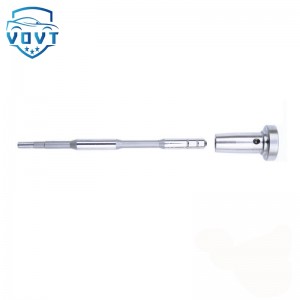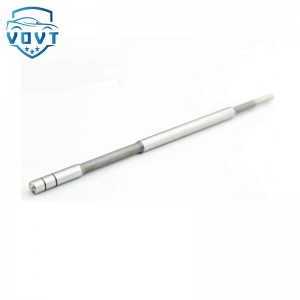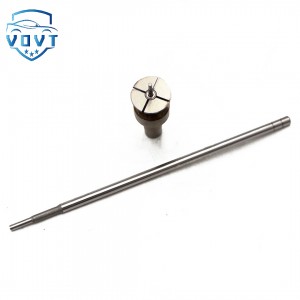High Precision New Diesel Injector Control Valve F00RJ02377 Valve Assembly for Fuel Injector Engine Spare Parts
Products Description
| Reference Codes | F00RJ02377 |
| Application | / |
| MOQ | 6 PCS |
| Certification | ISO9001 |
| Place of Origin | China |
| Packaging | Neutral packing |
| Quality Control | 100% tested before shipment |
| Lead time | 7~10 working days |
| Payment | T/T, L/C, Paypal, Western Union, MoneyGram or as your requirement |
Function of the injector valve assembly
Accurately control the amount of fuel injection
Core function: According to the engine's operating conditions (such as speed, load, temperature and other signals), accurately adjust the amount of fuel injection to keep the air-fuel ratio (the ratio of air to fuel) within the ideal range (such as near the theoretical air-fuel ratio of 14.7:1).
Working principle:
The solenoid valve (or hydraulic control valve) in the valve assembly controls the opening time and opening of the valve core by receiving the electrical signal from the ECU (engine control unit). The longer the opening time and the larger the opening, the more fuel is injected; otherwise, the less. For example, when the engine accelerates, the ECU will instruct the valve assembly to increase the amount of fuel injection to meet the power demand.
Control the timing of fuel injection
Function: Ensure that the fuel is accurately injected into the combustion chamber at the end of the engine compression stroke (close to the top dead center) and fully mixed with the air to avoid reduced combustion efficiency, knocking or excessive emissions due to premature or late injection.
Working mechanism:
The valve core action of the valve assembly is driven by the camshaft or solenoid valve, and its opening and closing timing is strictly synchronized with the crankshaft angle of the engine. For example, in a diesel engine, too early injection timing will lead to excessive combustion pressure and increased noise; too late injection timing will cause the fuel to not burn fully, resulting in increased fuel consumption and black smoke emissions.
Realize fuel atomization and injection pressure control
Fuel atomization:
The nozzle part of the valve assembly (such as the needle valve, spray hole) breaks the fuel into fine droplets (usually 10-50 microns in particle size) through the injection of high-pressure fuel, increasing the contact area between the fuel and the air and promoting combustion efficiency. For example, the injection pressure of the gasoline engine direct injection system can reach 20-35MPa, and the injection pressure of the diesel engine can even reach more than 200MPa. High-pressure injection makes the fuel atomization more complete.
Pressure establishment and maintenance:
The pressure chamber (or pressure accumulator) in the valve assembly maintains the high pressure required for fuel injection through the sealing effect of the valve core. When the valve core is opened, the high-pressure fuel is sprayed out through the spray hole; when the valve core is closed, the pressure chamber maintains pressure to ensure the stability of the next injection.
Sealing and preventing fuel leakage
Sealing function:
The seals in the valve assembly (such as O-rings and sealing cones) ensure that the fuel will not leak into the engine cylinder or the external environment under high pressure, avoiding fuel waste, safety hazards (such as fire risks) and environmental pollution.
Prevent dripping:
When the injection is completed, the valve core closes quickly and the sealing surface fits tightly to prevent the fuel from dripping from the spray hole due to pressure fluctuations. Dripping will lead to incomplete combustion and increased carbon deposits, affecting engine performance and emissions.
Dynamic adjustment to adapt to different working conditions
Multi-condition matching:
The valve assembly can dynamically adjust the injection amount, injection pressure and timing according to different working conditions such as engine idle speed, medium load, full load, cold start, etc. For example:
At idle, the injection amount is small and the pressure is low to ensure stable combustion;
At full load, the injection amount increases and the pressure rises to improve power output;
At cold start, the injection timing is advanced and the injection amount increases to improve starting performance.
Emission optimization:
Reducing the generation of unburned hydrocarbons (HC), carbon monoxide (CO) and nitrogen oxides (NOx) by precisely controlling the injection process. For example, the common rail system of a diesel engine can reduce combustion temperature and pressure fluctuations and reduce NOx and particulate matter (PM) emissions through multiple injections (pre-injection, main injection, post-injection).























